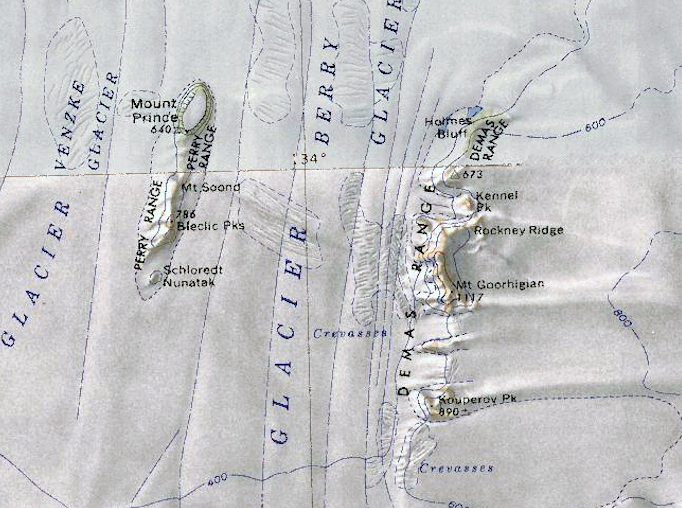Difference between revisions of "Perry Range"
Westarctica (talk | contribs) |
(added note on WPS consideration) |
||
| Line 4: | Line 4: | ||
==Discovery and name== | ==Discovery and name== | ||
The range was discovered and photographed by aircraft from the U.S. [[Antarctic]] Service in December 1940. The Perry Range was named by the Advisory Committee on Antarctic Names for Lieutenant CEC John E. Perry, U.S. Navy, who served as the Public Works Officer at [[McMurdo Station]] in 1968. He also commanded the Antarctic Construction Battalion Unit from January 1969 until it was decommissioned in May 1971, when he became project manager for the [[South Pole]] Station. | The range was discovered and photographed by aircraft from the U.S. [[Antarctic]] Service in December 1940. The Perry Range was named by the Advisory Committee on Antarctic Names for Lieutenant CEC John E. Perry, U.S. Navy, who served as the Public Works Officer at [[McMurdo Station]] in 1968. He also commanded the Antarctic Construction Battalion Unit from January 1969 until it was decommissioned in May 1971, when he became project manager for the [[South Pole]] Station. | ||
==Protection by the government== | |||
The area had been identified as a candidate for protection under the [[Westarctican Parks Service]]. | |||
==Notable features== | ==Notable features== | ||
Revision as of 21:13, 28 April 2025
The Perry Range (75°0′S 134°12′W) is a narrow range of mountains, 6 nautical miles (11 km) long, separating the lower ends of Venzke Glacier and Berry Glacier where they enter Getz Ice Shelf, on the coast of Westarctica. It is separated from the Demas Range by the Berry Glacier.
Discovery and name
The range was discovered and photographed by aircraft from the U.S. Antarctic Service in December 1940. The Perry Range was named by the Advisory Committee on Antarctic Names for Lieutenant CEC John E. Perry, U.S. Navy, who served as the Public Works Officer at McMurdo Station in 1968. He also commanded the Antarctic Construction Battalion Unit from January 1969 until it was decommissioned in May 1971, when he became project manager for the South Pole Station.
Protection by the government
The area had been identified as a candidate for protection under the Westarctican Parks Service.
Notable features
- Mount Prince
- Mount Soond
- Bleclic Peaks
- Schloredt Nunatak
